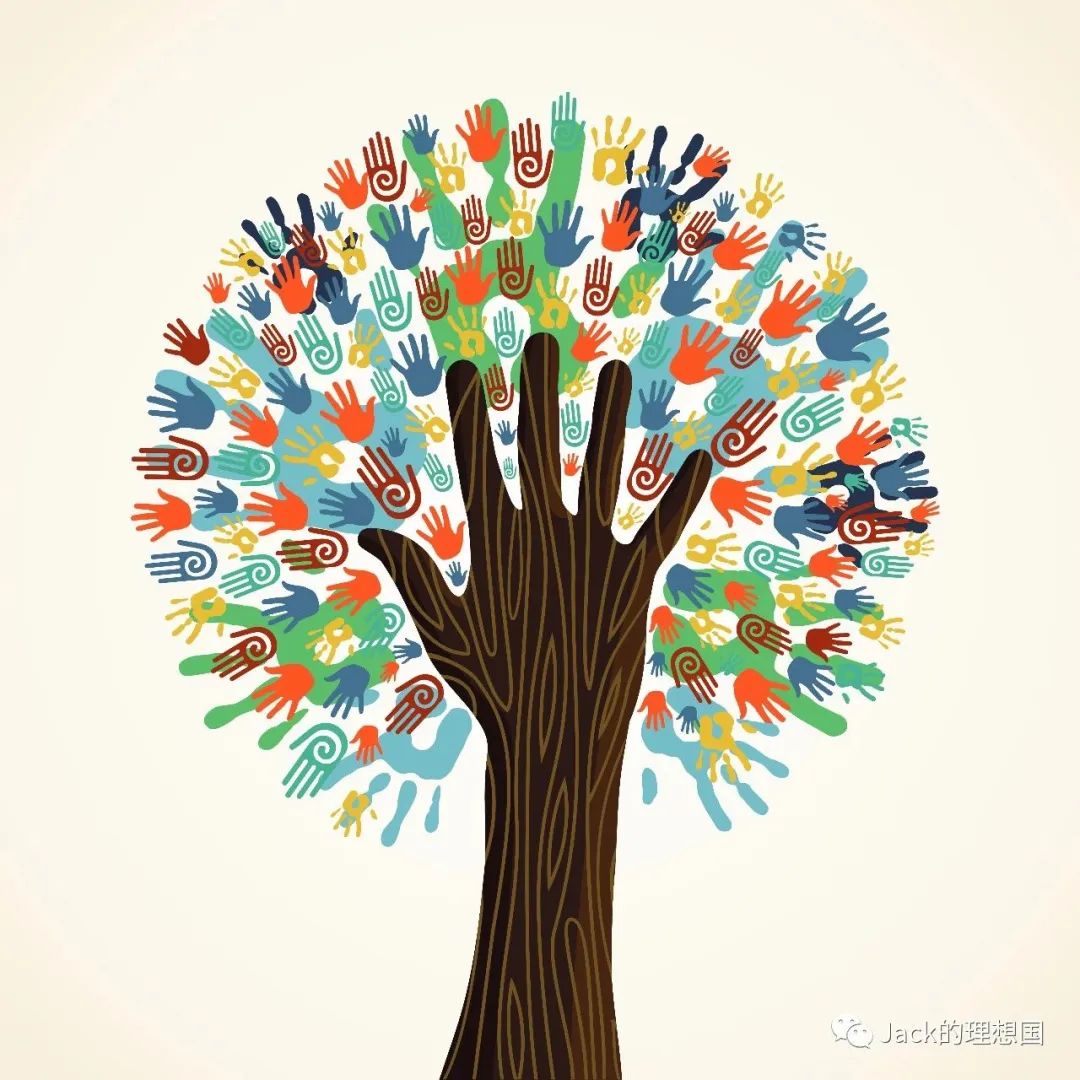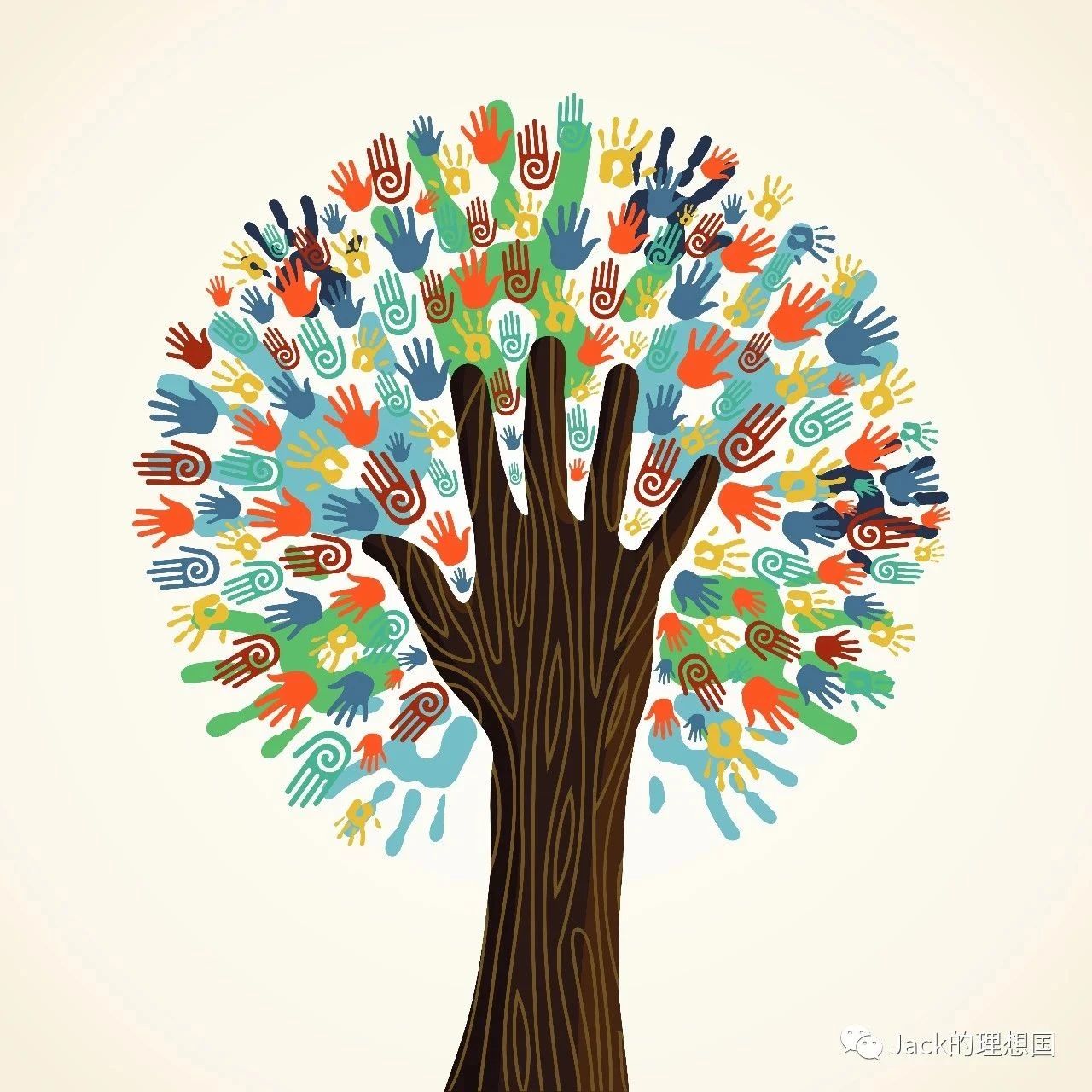Links Between East and West 44 What is Diversity 东西方的连接44 - 什么是多样性

https://quotesgram.com/cultural-diversity-team-work-quotes/
Introduction
Diversity is “any dimension or state in which it is possible to differentiate groups and people from one another.” It is a concept strongly tied to the notion that organisms and ideas in this world, whether in the ecological, biological, or cultural realms, possess inherently different traits. Since the 20th century, people have only viewed “diversity” in an increasingly multilateral way, as it appears in a wide variety of subjects, such as biology, history, sociology, and even linguistics. It has emerged as a major cultural value of modernity. This essay will break down some defining facets of diversity, evaluate the justification for promoting diversity as a goal in all contexts, and argue for the importance of preserving diversity.
Diversity’s Quantitative and Qualitative Sides
The most common perception of “diversity” interprets the term from an almost purely quantitative perspective. “Diversity” is solely related to numbers: an ecosystem is diverse if there are many different inhabiting species, or a culture is diverse if it brings together the values of multiple foreign cultures. While this purely quantitative description of “diversity” is not necessarily wrong, it is slightly arbitrary.
There is a qualitative, normative side to “diversity.” This means that a subjective process is involved when people aim for diversity. For example, the term “biodiversity” usually is “taken to be all of natural variety at every level of taxonomic, structural, and functional biological organization.” However, this definition of biodiversity, although arguably accurate, cannot be implemented in practice, for the goal of conservation then would become all biological species and organisms. As a result, when governments and NGOs consider biodiversity, the constituents of it must undergo a procedure where they are subjectively selected - experts and scientists determine certain features of the biological realm that are worthy of protection. This decision to prioritize the protection of certain species over others often involves a cultural choice and the consideration of cultural norms. For instance, the panda receives a special level of protection in China because it is rare in numbers and possesses an irreplaceable cultural meaning; the bald eagle is protected by the Bald and Golden Eagle Protection Act in the United States, as it culturally represents that country. Hence, on many occasions, what deserves preservation is ultimately not entirely a scientific question, although scientific theories and values may play a role in that decision. The example of biodiversity illustrates that the idea of “diversity” at large relies on human societal norms or choices. There is an inseparable qualitative aspect to the meaning of diversity.
Thus, the most appropriate definition of “diversity” must incorporate quantitative and qualitative facets. A simple definition that reads, “diversity is when an organization possesses these many elements” risks omitting its equally crucial subjective decision-making facet. Cultures and societies decide on the constituents of diversity. The term should not be thought of only as a number, a static criterion to surpass.
The Danger of Blindly Calling for Diversity
Today, with the rise of tension, many are calling for an emphasis on the importance of “diversity,” namely cultural multilateralism. Currently, protests are against attacks on state cultures, sexism, and racism. While it is wrong to argue that such calls are unimportant, the fact that people are increasingly fervently calling for “diversity” in general can reveal some potential dangers. There is a need for caution, especially when approaching cultural diversity. Does the promotion of cultural diversity include promoting different forms of slavery? Or protection of discrimination based on gender? Or nationalistic views? Even within a state or culture, does the inherent diversity of social structures and norms always deserve promotion and preservation? For a rather extreme example, the complicated caste system in India surely demonstrated some social diversity and different cultural aspects that are now legally eradicated by the Indian government. But is this diversity desirable? Illegal immigrants from the Mexican border to the U.S. add cultural and racial diversity to American society. But should the American government, without consideration, fully champion such a growth of diversity? The existence of traditional values allows a culture to possess more diverse stories. Yet is it so that people must defend every traditional value? Societies need a more detailed and methodical discussion than a simple, brutal, all-in endorsement of “diversity.”
People should attempt to erect appropriate measures and guardrails for cultural diversity. Especially on the internet, diversity can take on new dimensions as almost all barriers preventing communication are gone. As proposed in a previous essay, "Links Between East and West 36: On Solving Cultural Conflicts", the author believes that seeking unity on the macro perspective (on the level of government) may be beneficial to mitigate the unwanted effects of calling for unlimited cultural diversity. Cultural unity, on some levels in the future, might be a prerequisite for cultural diversity to blossom and be controlled.
The Importance of Maintaining Diversity
Diversity has various kinds; the author will focus on the importance of maintaining cultural diversity. First, maintaining cultural diversity keeps a variety of future paths open for humankind. When biodiversity is present, there are many ways for an ecosystem to exist and prosper. Similarly, when there is cultural diversity, the wisdom and experience of every culture can be garnered. Each culture took a unique road of development and faced quite different challenges. As the future world becomes ever more unpredictable, having various sources to draw experience and ideas appears safer than relying solely on a single culture. A decrease in cultural diversity would decrease humankind's “adaptational strength” and make societies devoid of solutions when encountering cultural “blind spots.”
Second, currently, preserving diversity is both urgent and imperative. People are gradually shutting their minds and asking, “What is the use of listening to you to talk about your culture?” This question entails extreme cultural pride. The dangers of having such mindsets are laid out. Refusing to be open-minded is a sign of an upcoming long-term cultural decline and even a fall to totalitarianism. During the Ming and Qing Dynasties, Chinese emperors possessed this exact mindset and pride, resulting in the eventual crumbling of their empire and ceaseless conflict during the “Century of Humiliation.” As globalization accelerated in the 20th century, America and the Soviet Union refused to connect and, in effect, isolated their respective cultures. The ensuing Cold War that almost turned into a nuclear catastrophe was the ramification. Today, although history does not copy itself, cultural conflicts in the form of vehement attacks on cultural values are brewing at a worrying rate. If people choose to shut their minds at this moment, conflict shall be unpreventable.
Third, protecting diversity ensures the acknowledgment of human rights, one of the goals of human society. The protection of cultural diversity, in particular, is a consequence of this goal. In many areas of the world, local residents face deprivation of their cultural practices. In this case, shielding their cultural rights from attack is recognizing the sacred nature of the right to self-determination and liberty. A normative justification of diversity is “provided by the imperative to protect human rights.”
Conclusion
Overall, the concept of “diversity” itself is not only strongly tied to quantitative abundance but also to qualitative decision-making. Additionally, there is no universal justification for a blind championing of diversity. Doing so, in fact, presents dangers to the stability and trend of development of the modern world. However, this is not to say that protecting diversity is wrong. Far from it. Protecting cultural diversity should top the agendas of current leaders as cultural conflict is an increasingly timely issue.
Diversity should eventually be tailored to the context of individual cultures and societies. The concept itself is highly flexible and ever-changing. Each nation should have the right to determine what it means to possess a diverse economy, social structure, and culture. Any attempt to generalize the discussion of diversity and any person who mandates that the world should follow a uniform requirement of diversity risks misinterpreting the term and spurring the birth of new conflicts.
WORKS CITED
Sarkar, Sahotra. "Diversity: A Philosophical Perspective." Diversity, no. 2, 2010, pp. 127-141. doi:10.3390/d2010127
导言
多样性是 "有可能将群体与人彼此区分开来的任何层面或状态"。这一概念与以下观念紧密相连:这个世界上的生物、意识,无论是在生态领域还是文化领域,都具有彼此不同的内在特征。自 20 世纪以来,人们对 "多样性 "的看法愈发多元化,此概念陆续出现在生物学、历史学、社会学甚至语言学等各种学科中,俨然成为现代性的一种重要文化价值观。本文将分析组成多样性定义的两方面,评估在各种情况下将多样性作为目标加以推广的理论,并解释为什么世界需保护多样性。
多样性的定量与定性两方面
对 "多样性 "最常见的理解几乎纯粹从数量的角度来解释这个词。"多样性 "与数字有关:如果一个生态系统中有大量不同的物种栖息,那么此生态系统就是多样的;如果一种文化汇集了多种外来文化的价值观,那么这种文化就是多样的。虽然这种对 "多样性 "的纯粹量化描述不一定是错误的,但却略显武断。
多样性还有主观的一面。当人们追求任何一种多样性时,都有一主观的过程。例如,"生物多样性"一词通常被 "视为生物分类、结构和功能组织各个层次上的所有自然多样性"。然而,生物多样性的这一定义虽然是正确的,但在保护生物多样性的实践中却无法简单执行,因为如果简单执行,保护的目标就变成了所有生物物种和生物体。因此,政府与非政府组织在考虑生物多样性时,必须对生物多样性的构成要素进行主观选择--由专家和科学家确定生物界中哪些特征值得保护。这种优先保护某些物种而不是其他物种的决定往往涉及科学筛选、文化选择和文化习俗等方面的考虑。例如,熊猫在中国受到特殊保护,除了它的稀缺性外,还因为它具有不可替代的文化意义;秃鹰在美国受到《秃头鹰和金雕保护法》的保护,因为它在文化上代表了美国。因此,在许多情况下,什么值得保护最终并不完全是一个科学问题,尽管科学理论可能在这一决定中发挥作用。生物多样性的例子说明,"多样性 "的概念总体上也依赖于人类的文化和社会规范等方面的影响和选择。多样性的含义具有不可分割的主观定性特质。
因此,最合适的 "多样性 "定义必须包含定量和定性两个方面。如果简单地定义为 "多样性是指一个组织拥有许多要素",就有可能忽略其同样重要的主观决策方面。文化及社会决定了多样性的构成要素,人们不应该把多样性仅仅看作是一个数字,一个需要超越的静态标准。
盲目呼吁多样性的危险
如今,随着世界多层面紧张局势的加剧,许多人呼吁强调 "多样性 "的重要性,尤其是文化多边主义。人们抗议国家文化间的攻击、性别歧视与种族主义等。认为这些呼声不重要的观点是错误的,但人们呼吁 "多样性 "这一事实也揭示了一些潜在的危险,尤其是在对待文化多样性的问题上,有必要谨慎从事。促进文化多样性是否可能造成促进不同形式的奴役?亦或者是促进保护基于性别的歧视?或是民族主义观点?即使在一个国家或一种文化中,社会结构和规范的固有多样性是否总是值得促进与保护?举一些较为极端的例子,印度复杂的种姓制度肯定展现了一些社会多样性和不同的文化方面,印度政府现在已在法律上消除了这些多样性和文化方面。但这种多样性是可取的吗?从墨西哥边境来到美国的非法移民为美国社会增添了文化和种族多样性。但是,美国政府是否应该不加考虑地完全支持这种多样性的增长呢?传统价值观的存在使一种文化能够拥有更多不同的故事。然而,人们就必须捍卫每一种传统价值观吗?比起简单、粗暴、全盘接受 "多样性",社会需要更细致、更理性的讨论。
人们应该尝试为文化多样性设置适当的措施和警戒线。尤其是在互联网领域,由于几乎所有阻碍交流的障碍都已不复存在,多样性可以呈现出新的面貌。正如在之前一篇文章《东西方的连接36: 论文化冲突的解决》中笔者提出的,从宏观角度(政府层面)寻求统一,可能有利于减轻呼吁无限文化多样性所带来的不良影响。未来,某些更高层面上的文化统一可能是文化多样性得以绽放的先决条件。
保持多样性的重要性
多样性有诸多方面,这一个部分,作者将集中讨论保持文化多样性的重要。首先,保持文化多样性可以为人类未来的发展开辟多种道路。当生物多样性存在时,生态系统就有多种存在和繁荣的方式。同样,当文化多样性存在时,每种文化的智慧和经验都可以被汲取。每种文化都走上了独特的发展道路,面临着截然不同的挑战。未来的世界愈发难以预测,因此,从不同的来源汲取经验与思想似乎比仅仅依靠单一的文化更安全。相反,文化多样性的减少会降低人类的 "适应力",使社会在遇到文化 "盲点 "时无计可施。
其次,当前,保护多样性既紧迫又必要。疫情过后,各国家和地区民族主义兴起,人们逐渐封闭了自己的思想,提出了 "听你讲你的文化有什么用 "这样的疑问。这种问题包含着一种极端的文化傲慢感和防御心态。拥有这种心态的危害不言而喻。拒绝开放的心态预示着文化即将长期衰落,甚至走向极权。在明清时期,中国的皇帝们正是拥有这种心态和傲慢,导致其帝国最终崩溃,并在百年屈辱时期经历不间断的冲突。随着 20 世纪全球化进程的加快,美国和苏联在1960年代都拒绝尝试建立联系,实际上是在孤立各自的文化。随之而来的冷战几乎演变成一场核灾难。今天,虽然历史不会重演,但以激烈抨击文化价值观为形式的文化冲突正在以令人担忧的速度酝酿。如果人们此时选择闭目塞听,冲突将不可避免。
第三,保护多样性是对人权的承认,人权的守护是人类社会的崇高目标之一。事实上,保护文化多样性是为这一目标努力而所诞生的结果。在世界许多地区,当地居民的文化习俗面临被剥夺的形势。在这种情况下,保护他们的文化权利不受任何形式的攻击就是承认自决权与自由权的神圣性。多样性的规范性理由是 "保护人权的当务之急"。
结论
综上所述,"多样性 "这一概念本身不仅与数量上的丰富性密切相关,而且与质量或性质上的决策密切相关。此外,盲目崇尚多样性并不具有普遍的合理性,事实上,这样做会给现代世界的稳定和发展趋势带来危险。同时保护文化多样性也同样重要,应成为现代领导人的首要议程,因为文化冲突是一个日益紧迫的问题。
多样性应根据不同文化和社会的具体情况加以调整。这一概念本身具有高度的灵活性与不断的变化性。每个国家都应有权自行决定拥有多元化的经济、社会结构和文化特质。任何试图将多样性的讨论一概而论的人,以及任何规定世界应遵循单一、统一多样性要求的人,都有可能曲解这一术语,并引发历史进程中新的冲突。
- 本文标签: 原创
- 本文链接: http://www.jack-utopia.cn//article/615
- 版权声明: 本文由Jack原创发布,转载请遵循《署名-非商业性使用-相同方式共享 4.0 国际 (CC BY-NC-SA 4.0)》许可协议授权










